Despite it being a thursday, the island was crowded. Mainly with NPCC cadets and possibly participants at the outward bound school. It was the first time I saw people canoeing off the Jetty at Ubin.
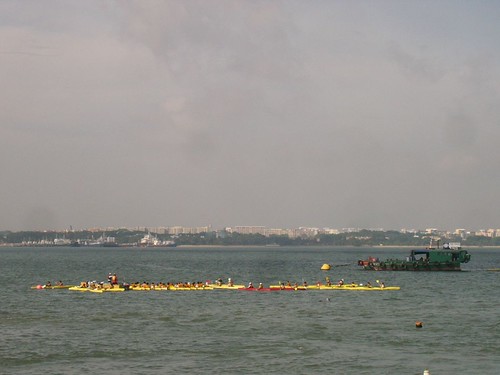
Photo by November
Some of the students were there as a field trip for their class on Environmental Geology by the Professor onboard, Prof Robert Carmichael from the University of Iowa. Being a geologist, you can only imagine how excited he was to be on the "granite island". He was on a quest for the Ubin Granite.
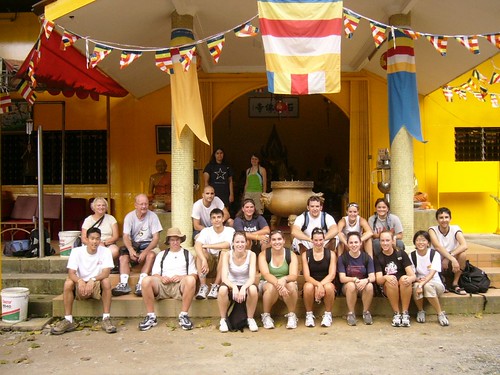
Photo by November
It had never occured to me before that it would be so difficult to find granite on Ubin. Afterall, it is the island where we have been harvesting granite from for more than a century up till the last quarry closed in the late 1990s. However, the quest proved rather challenging.
First of all, in order to see how exactly Ubin granite looks like, you have to look for freshly exposed rocks. That is almost impossible because most of the rocks around the island are deeply weathered. You can tell which rocks are weathered by seeing the dark color on the surface, the smooth surface, or sometimes even a layer of moss on the top. Freshly exposed granite should be bright and rough. However, the only such patch of rock was on the steep cliff face at Ubin Quarry!
Secondly, although we find a lot of granite pebbles and bits of rocks strewn across many of the roads and trails, most of these are not from the island itself. A lot of it are actually transported from the mainland and dumped there as a site of disposal. Talk about foreign talent! Even our native ubin granite are possibly being replaced by 'foreign' granite materials from the mainland.
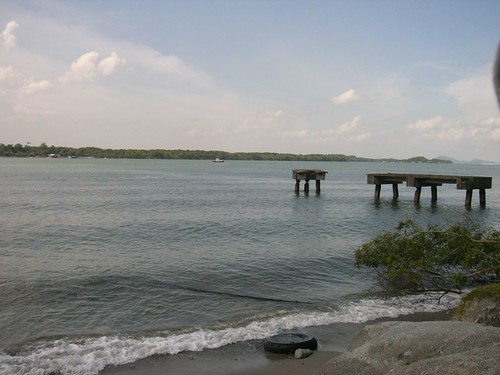
Where has our granite gone? Photo by November
Although the Ubin granite are often considered similar as the Bukit Timah Granite on mainland Singapore, studies have shown that:
"The Pulau Ubin Granite has some differences from the Bukit Timah Granite. It is richer in minerals, e.g. green hornblende and brown biotite occuring in clusters. Inclusions occur commonly on Pulau Ubin and Changi, representing mainly the bodies of basic rock and these can vary from 1 cm to tens of metres."(Wong et al, 2005)Alas, the day ended rather disappointly for the professor despite several encounters with the granite kind but I do not think he has actually managed to find any real Ubin Granite.
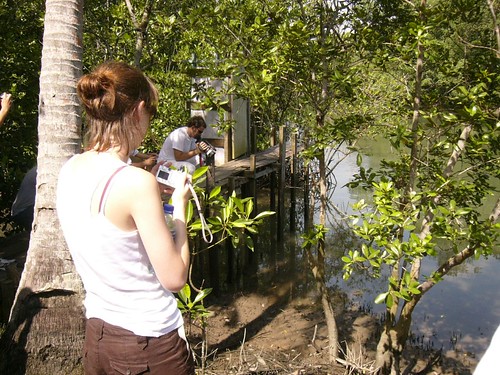
Photo by November
Still, everybody enjoyed themselves after a long day on the granite island, discovering mudskippers in the flesh for the first time and "getting away from the city on the mainland" as some of them confided in me.
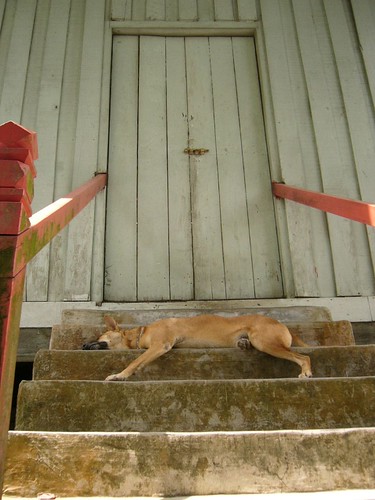
Photo by November
It was a satisfying day for one and all, especially knowing that a group of people walked away enriched with a little known and fast disappearing side of Singapore.
For more photos, visit my flickr set of the trip.
Source:




No comments:
Post a Comment